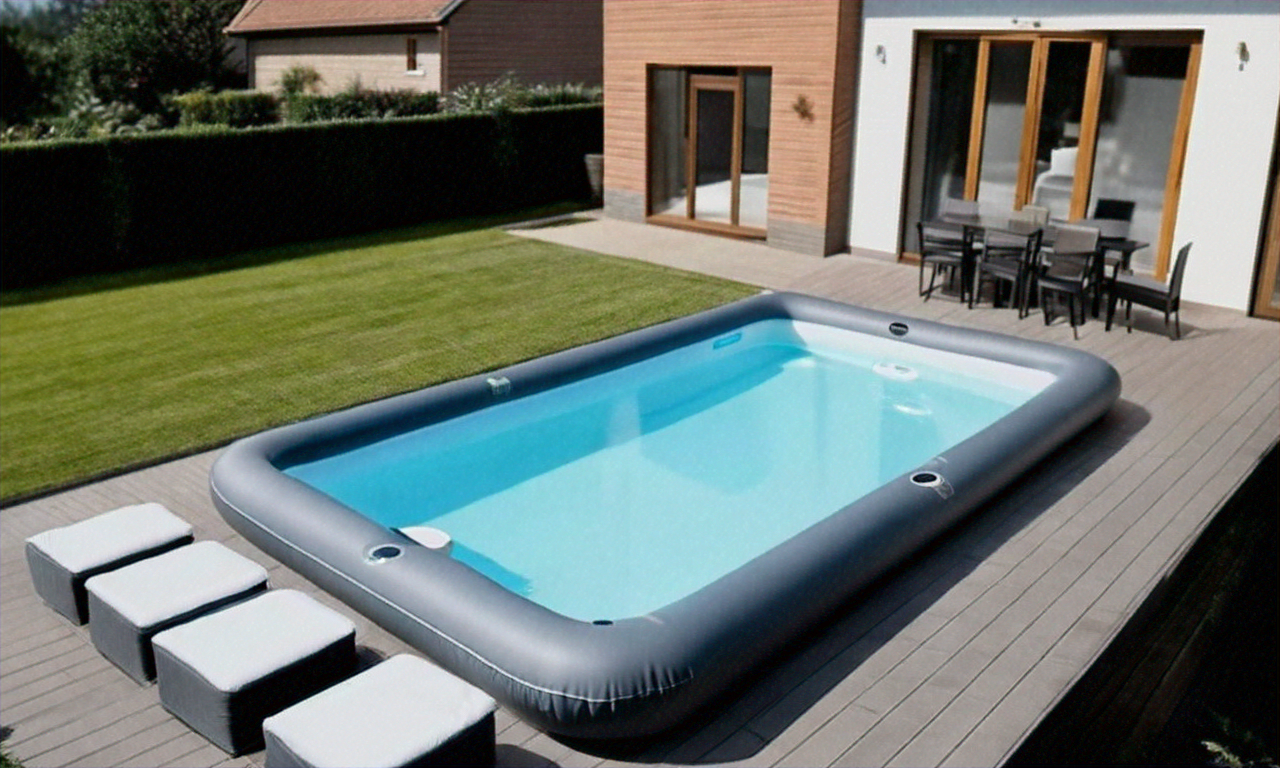Create Your Perfect Backyard Pool
Installing a swimming pool transforms your backyard into a personal oasis, offering countless opportunities for relaxation, exercise, and entertainment. Whether you're envisioning lazy summer afternoons or hosting memorable gatherings, a well-designed pool becomes the centerpiece of your outdoor living space. From enhancing property value to providing year-round enjoyment, the decision to add a pool involves careful consideration of benefits, costs, space requirements, and the installation process.

What Are the Main Benefits of Installing a Home Pool?
A backyard swimming pool delivers numerous advantages that extend far beyond simple recreation. Health-conscious homeowners appreciate having convenient access to low-impact cardiovascular exercise, allowing for regular swimming routines without gym memberships or travel time. Pools also provide excellent therapeutic benefits for individuals with joint issues or those recovering from injuries.
Property value typically increases with pool installation, often adding 5-8% to your home’s market worth in desirable climates. The entertainment value proves invaluable for families and social gatherings, creating a natural focal point for outdoor activities. Additionally, pools offer privacy and convenience compared to public swimming facilities, eliminating concerns about crowded conditions or limited hours.
Are There Financing Options for Building a Swimming Pool?
Multiple financing avenues exist to make pool installation more accessible to homeowners. Home equity loans and lines of credit (HELOCs) represent popular choices, often offering competitive interest rates since your home serves as collateral. Personal loans provide another option, though typically at higher interest rates but with faster approval processes.
Many pool contractors partner with financing companies to offer specialized pool loans with promotional terms. Some manufacturers provide seasonal incentives or rebate programs during slower construction periods. Additionally, certain energy-efficient pool equipment may qualify for local utility rebates or tax credits, helping offset overall project costs.
What Space Requirements Are Needed to Install a Pool?
Pool installation requires careful evaluation of your available space and local regulations. Most municipalities mandate specific setback distances from property lines, typically ranging from 5-15 feet depending on your location. Underground utilities must be located and marked before excavation begins, requiring coordination with local utility companies.
Adequate space for equipment, such as pumps, filters, and heaters, must be designated near the pool area. Consider access routes for construction equipment and ongoing maintenance needs. Drainage patterns should direct water away from the pool area, and sufficient space for decking, landscaping, and safety features like fencing must be incorporated into your planning.
How Much Does Building and Maintaining a Pool Cost?
Swimming pool costs vary significantly based on size, type, and features selected. In-ground pools typically range from $35,000 to $100,000 for standard installations, while above-ground options cost between $3,000 and $15,000. Factors influencing price include excavation requirements, decking materials, water features, and automation systems.
Annual maintenance expenses generally range from $1,200 to $3,000, covering chemicals, cleaning, equipment repairs, and seasonal services. Energy costs for pumps and heating systems add $600 to $2,000 yearly, depending on usage patterns and local utility rates. Homeowners insurance may increase by $50 to $300 annually to cover pool-related liability.
| Pool Type | Provider/Contractor | Cost Estimation |
|---|---|---|
| Basic In-Ground Vinyl | Local Pool Companies | $35,000 - $50,000 |
| Fiberglass In-Ground | Leisure Pools, Thursday Pools | $45,000 - $70,000 |
| Concrete/Gunite | Pool Corp, Premier Pools | $60,000 - $100,000+ |
| Above-Ground | Intex, Summer Waves | $3,000 - $15,000 |
Prices, rates, or cost estimates mentioned in this article are based on the latest available information but may change over time. Independent research is advised before making financial decisions.
What Is the Pool Design and Installation Process?
The pool installation process begins with initial consultation and site evaluation, where contractors assess your space, soil conditions, and local permit requirements. Design development follows, incorporating your preferences for size, shape, depth, and additional features like waterfalls or lighting systems.
Permit acquisition typically takes 2-4 weeks, during which time materials are ordered and construction schedules are finalized. Excavation marks the beginning of physical construction, followed by plumbing and electrical rough-ins. The installation timeline varies by pool type, with fiberglass pools completing in 1-2 weeks, while concrete pools require 6-12 weeks for full completion.
Final steps include equipment installation, water filling, chemical balancing, and comprehensive system testing. Most reputable contractors provide detailed maintenance training and warranty coverage for both materials and workmanship, ensuring your investment remains protected during the initial operation period.
Creating your perfect backyard pool involves balancing desired features with practical considerations like space, budget, and ongoing maintenance requirements. Success depends on thorough planning, selecting qualified contractors, and understanding the long-term commitment involved. With proper preparation and realistic expectations, a swimming pool becomes a valuable addition that enhances both your lifestyle and property value for years to come.




